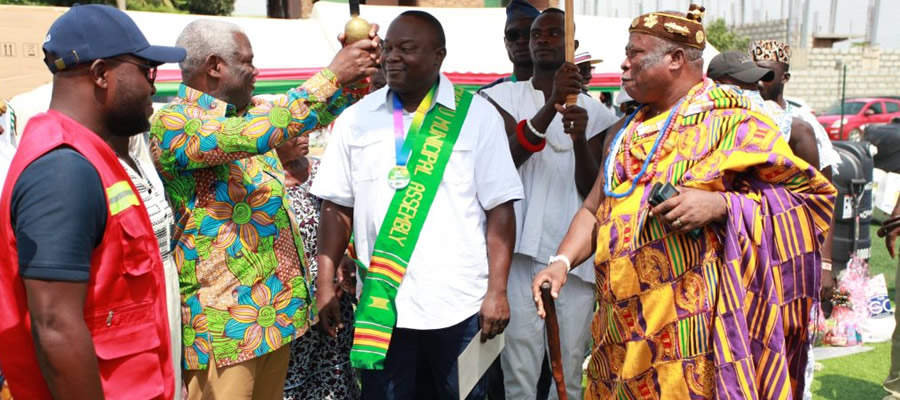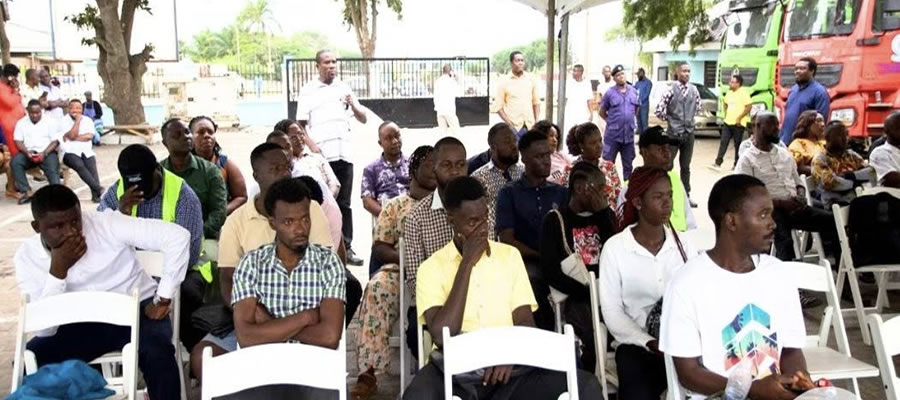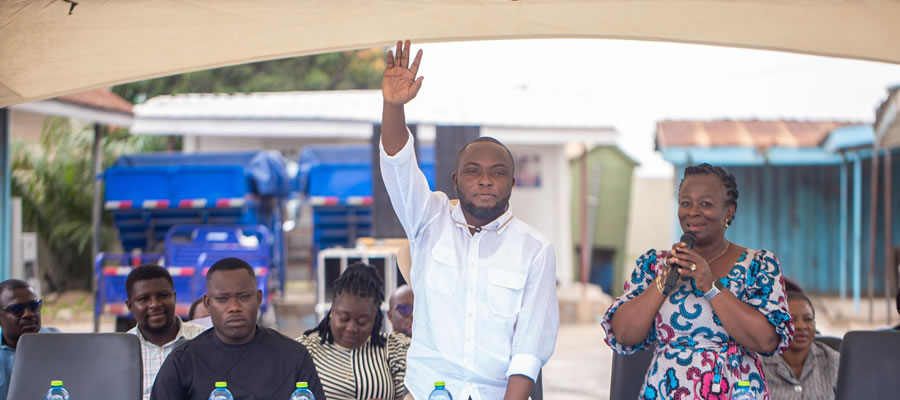

Location and Size
The total land area of Ledzokuku Municipal is estimated at 47.57510 square kilometers. The Southern boundary of the Municipality is the Gulf of Guinea from the Kpeshie Lagoon to the Mukwe Lagoon near Regional Maritime Academy. The boundary continues along the Maritime Road to join the Accra – Tema road to Nungua Police Barrier. It turns right to the Ashiaman road and continues to hit the Spintex Road and moves all the way to Coastal Estate junction and moves along to mile post 91/2 to the Kwame Nkrumah Motorway. From there it continues left along the motorway and branches south at the end of the Motorway, moves along the Tetteh Quarshie Circle and moves south along the boundaries of the Ashitey Akomfra Electoral area and towards the estuary of the Kpeshie lagoon.
Geology
The geology of the Ledzokuku Municipal is broadly made up of Precambrian Dahomeyan Schists, Granodiorites, Granites Gneiss and Amphibolites to late Precambrian Togo Series comprising mainly Quartzite, Phillites, Phylitones and Quartz Breccias. Apart from these formations PalaeozoicAccraian Sediments - Sandstone, Shales and Interbedded SandstoneShale with Gypsum Lenses are also found in the area. Soils found in the area are also categorised into four main groups namely: drift materials resulting from deposits by windblown erosion; alluvial and marine motted clays of comparatively recent origin derived from underlying shales; residual clays and gravels derived from weathered quartzites, gneiss and schist rocks, and lateritic sandy clay soils derived from weathered Accraian sandstone bedrock formations.
Climate
Ledzokuku Municipal lies in the Coastal Grassland zone which experiences a double maxima rainy season pattern. The average annual rainfall is about 730mm, which falls primarily during the two rainy seasons. The first season begins in May and ends in mid-July while the second season begins in mid-August and ends in October. Rainfall is usually characterised by quick and short intensive storms and causes flooding in areas of poor drainage. This calls for expansion of drainage in such areas to accommodate rainfall.
The predominant wind direction in the Ledzokuku Municipal area is from the WSW to NNE sectors with speeds normally ranging between 8 to 16 km/hr. High wind gusts are characterised by thunderstorm activity, which pass in squall along the coastal portions. The maximum wind speed record in the district is 107.4 km/hr (58 knots) and such winds associated with thunderstorm activity often cause damage to property by removing roofing material. This should be considered in approving designs for buildings, billboards, masts and other physical structures to ensure safety and stability.
The annual temperature figures are also relatively stable with very little variation in annual temperature figures. August, the coolest month, usually comes with a mean temperature of 24.7°c while the hottest period is found in March with a mean of 28°c. With an annual average of 26.8°c in temperature and the proximity of the area to the equator, the daylight hours are practically uniform during the year. Relative humidity in the area is generally high varying from 65% in the mid-afternoon to 95% at night. The differentials in temperatures identified should inform architectural designs of buildings to ensure convenience in building designs.
Terrestrial Vegetation
The vegetation of the municipality was believed to have been covered by dense forest but currently only a few remnant trees have survived due to a multiplicity of factors relating to rapid urbanisation and limited enforcement of laws protecting the terrestrial vegetation. The three key vegetation zones are made up of shrub lands, grassland and coastal lands. The grasses comprise a combination of species found in the undergrowth of forests which are usually short, and rarely grow beyond one metre.
There is however a small green belt near the Teshie Coastal area which is seriously under threat of encroachment and this calls for very proactive measures to protect such areas not only to conserve coastal ecosystems but also to enhance the tourism potentials in such areas. Drainage: The drainage catchment area of the municipality is found within the SongoMokwe area which covers about 50km2, draining the area of Teshie to the ridgeline with the Sakumo II catchment. Two main streams drain the area flowing into the Mokwe and Songo Lagoons. Much of this catchment is undergoing illegal residential development leading to extensive flooding during the rainy season.
Air Quality
Compared to the air quality of cities in some developed countries, the Ledzokuku Municipal
area generally has relatively good air quality. Minor incidents of localised pollution in the
Teshie Compost Plant area as well as automobile fumes arise periodically and are a matter of
concern to city authorities and residents alike. During the months of December to February,
the effect of the Harmattan (fine windblown dust from the Sahara region) causes loss of
visibility and some health problems but these are seldom prolonged.
Date Created : 12/4/2017 5:52:14 AM












 facebook
facebook
 twitter
twitter
 Youtube
Youtube
 +233 593 831 280
+233 593 831 280 0800 430 430
0800 430 430 GPS: GE-231-4383
GPS: GE-231-4383 info@ghanadistricts.com
info@ghanadistricts.com Box GP1044, Accra, Ghana
Box GP1044, Accra, Ghana